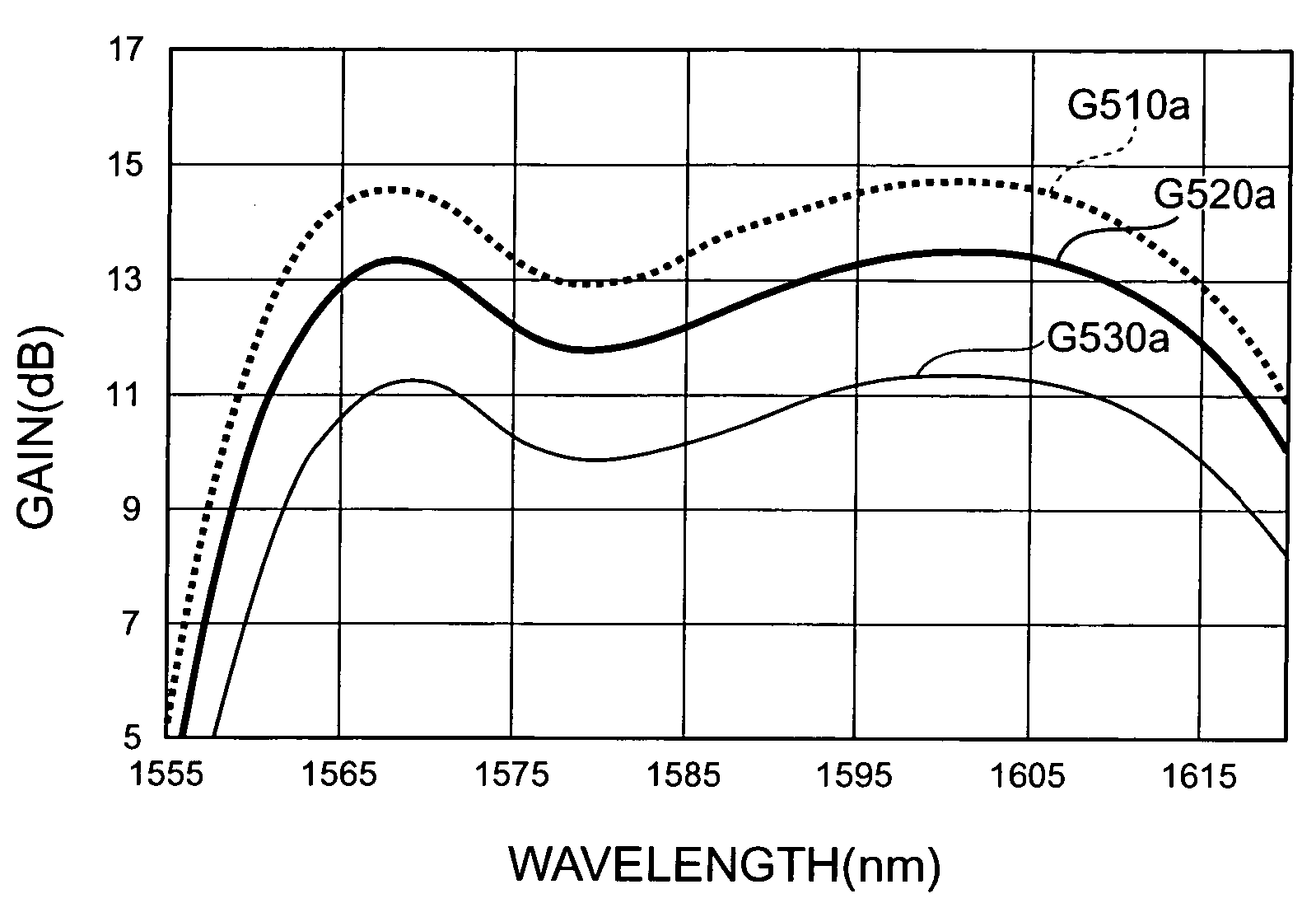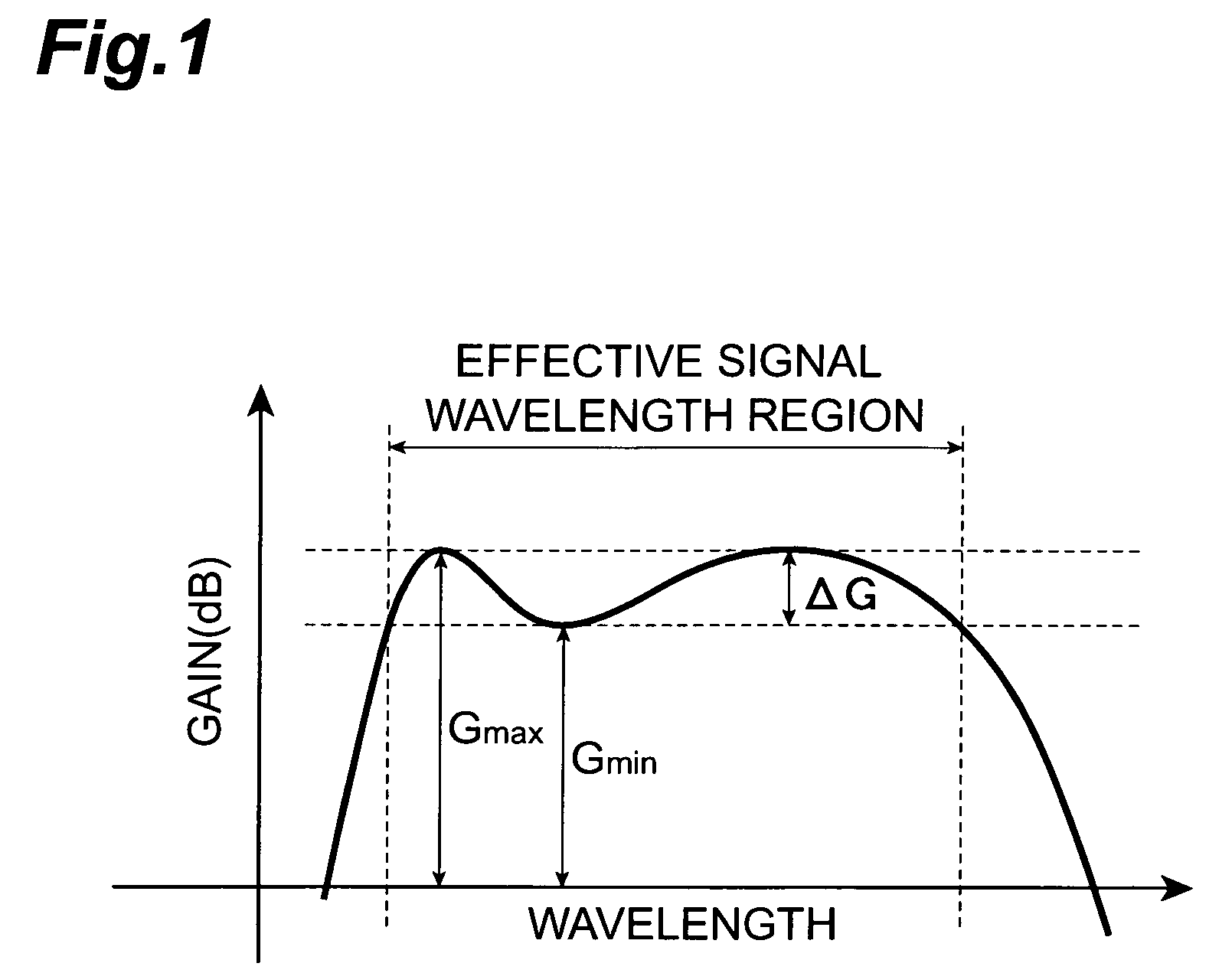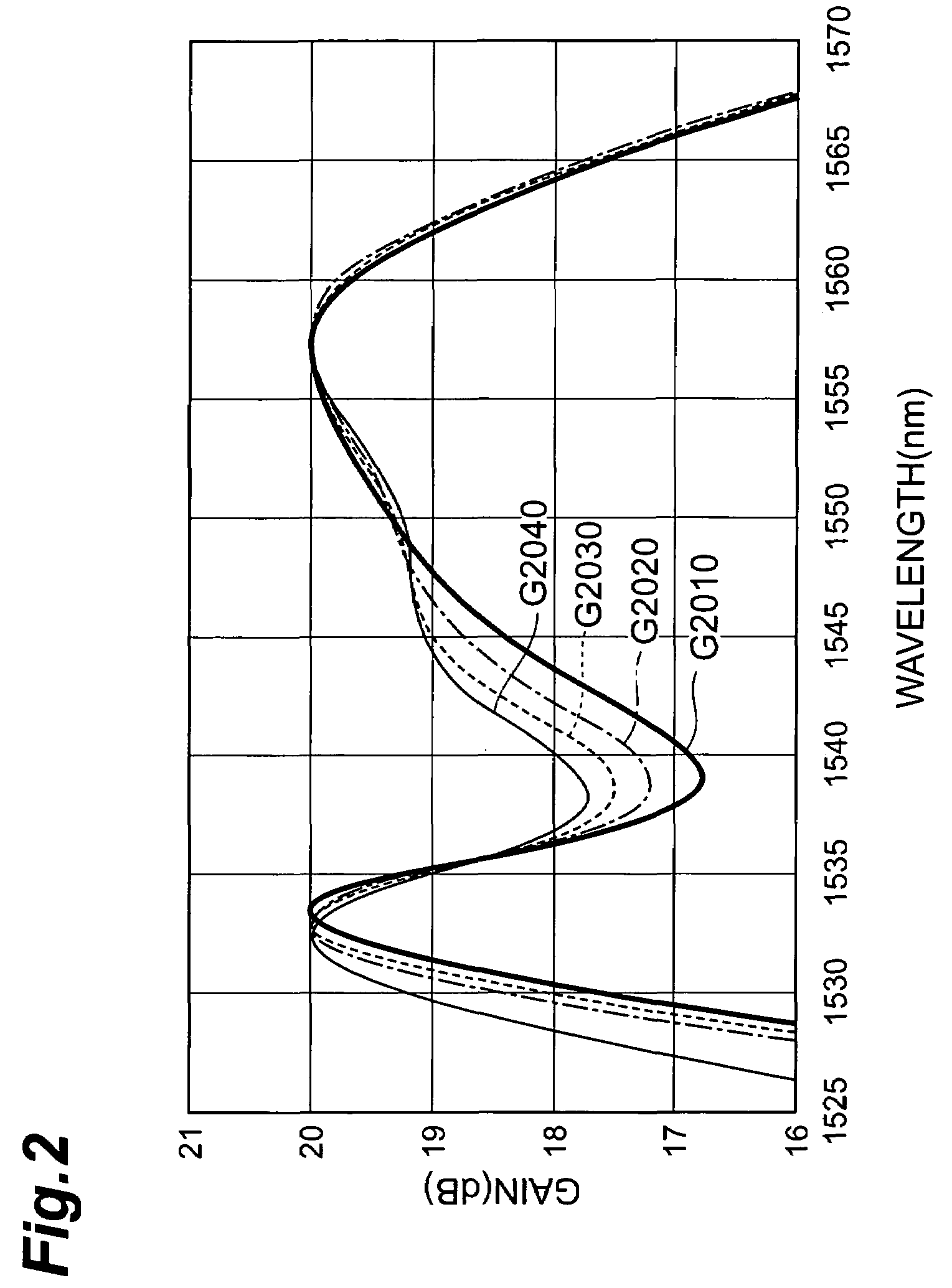Optical amplification module, optical amplification apparatus, and optical communications system
- Summary
- Abstract
- Description
- Claims
- Application Information
AI Technical Summary
Benefits of technology
Problems solved by technology
Method used
Image
Examples
first embodiment
[0064]FIG. 3 is a diagram showing the configuration of the optical communications system according to the present invention. The optical communications system 1 shown in this diagram comprises an optical transmitting station 10, an optical repeating station 20, an optical receiving station 30, and optical fiber transmission lines 40, 50. The optical fiber transmission line 40 is laid between the optical transmitting station 10 and the optical repeating station 20, whereas the optical fiber transmission line 50 is laid between the optical repeating station 20 and the optical receiving station 30.
[0065]The optical transmitting station 10 comprises light source units 11C1 to 11C4, light source units 11L1 to 11L4, an optical multiplexer 12C, an optical multiplexer 12L, an optical amplification apparatus 13C, an optical amplification apparatus 13L, and an optical multiplexer 14. The light source units 11C1 to 11C4 output signal light in which a plurality of channels of wavelengths differ...
second embodiment
[0084]FIG. 5 is a diagram showing the configuration of the optical amplification apparatus according to the present invention. The optical amplification apparatus 200 shown in this diagram is suitable for the optical amplification apparatus 23L, 33L included in the optical communications system 1 shown in FIG. 3. The optical amplification apparatus 200 comprises, successively from its input end 201 to output end 202, an optical coupler 211, an optical isolator 221, an optical coupler 213, a Bi type EDF 231, an optical isolator 222, a dispersion-compensating optical fiber 270, an optical isolator 223, an optical coupler 214, a Bi type EDF 232, a silica-based EDF 233, an optical coupler 215, an optical isolator 224, and an optical coupler 212. The optical amplification apparatus 200 also comprises a light-receiving device 251 connected to the optical coupler 211, a light-receiving device 252 connected to the optical coupler 212, a pumping light source 253 connected to the optical coup...
third embodiment
[0141]As a control method therefor, fluctuations in actual gain may be detected from the ratio between input and output monitoring results as shown in the optical amplification apparatus 300 shown in FIG. 11, and the temperature of the Er-doped Bi type EDF may be controlled according to the above-mentioned expression (4). In many cases, it is necessary for the optical amplification apparatus to keep its output constant, whereby a control unit is also necessary for feedback-controlling the pumping light power so as to keep the monitored output constant. In this case, since the output is constant, the temperature control for Er-doped Bi type EDFs maybe carried out according to the fluctuation in monitored input.
[0142]When the input level is held constant while only the output level is needed to be adjusted depending on the state of transmission lines, as in a booster amplifier in a repeaterless communications system, it is possible to carry out control according to the fluctuation in...
PUM
 Login to View More
Login to View More Abstract
Description
Claims
Application Information
 Login to View More
Login to View More - R&D
- Intellectual Property
- Life Sciences
- Materials
- Tech Scout
- Unparalleled Data Quality
- Higher Quality Content
- 60% Fewer Hallucinations
Browse by: Latest US Patents, China's latest patents, Technical Efficacy Thesaurus, Application Domain, Technology Topic, Popular Technical Reports.
© 2025 PatSnap. All rights reserved.Legal|Privacy policy|Modern Slavery Act Transparency Statement|Sitemap|About US| Contact US: help@patsnap.com



